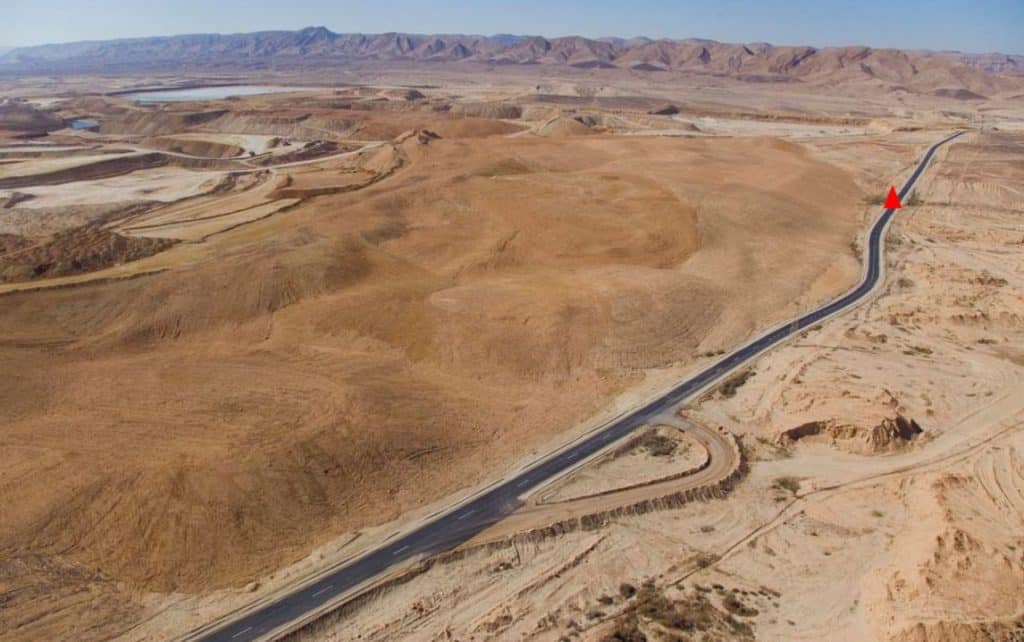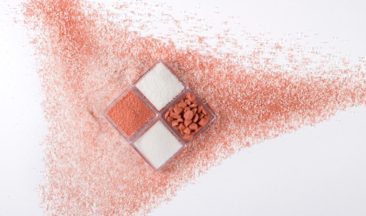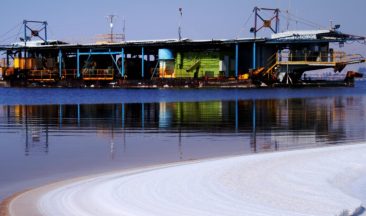ICL manufactures specialty products on four continents and markets them to thousands of customers in more than 180 countries, meeting the evolving needs of millions of people around the globe.
To accomplish this, the company uses various natural resources such as raw materials, energy, and water. We strive to minimize the environmental impact of our operations particularly in the area of responsible mining.
Mining today, which involves the removal of minerals from the earth has become essential to our modern economies which cannot thrive without essential minerals produced by mining, used for numerous industries and to ensure food security for the world growing population.
Modern mining is transforming into a system based on sound ecological or responsible mining principles which encompass comprehensive resource utilization with low environmental impact and ecological restoration of the damaged ecosystems.
ICL has a strong commitment to environmental responsibility and sustainable development while practicing green mining.
The Importance of Rehabilitating Mining Sites
At ICL we are committed to environmental compliance and strive to achieve the highest safety performance and environmental responsibility.
We continually invest in environmental responsibility and protection to prevent pollution while increasing the efficiency of production facilities, and improving environmental procedures and measures.
We are dedicated to preserving natural ecosystems and biodiversity by practicing advanced mine restoration and operating in total transparency.
Mines Have a Finite Lifespan
Since a mining operation by its very nature comes to an end when the resource is depleted, mining represents a temporary use of the land with an increasing need for balancing development with sustainability.
After mining finishes, the mine area must undergo environmental rehabilitation and restoration to minimize land loss and make the site of net benefit to society as natural landscapes by employing stewardship and proper management with the ultimate goal of returning the land to similar condition before any mining took place.
Restoration Should Be Planned Before Mining Starts
Mine restoration, although performed after mining is completed, is best suited when planned before mining and conducted throughout the mining process lifecycle.
As mining represents a transient use of the land, the ultimate goal of mine restoration projects is restoring functionality or preparing the site for other beneficial social, historical, environmental, or economic uses while minimizing interference with sensitive ecosystems and restoring biodiversity.
Restoring and Regenerating Nature
The aim of the new ecosystem that is established is to assume a similar, but not necessarily identical, structure, function, and composition to the original ecosystem.
ICL’s goal as a global force in mining and as an environmentally responsible company is to restore biodiversity that existed before the mining activities through effective mine restoration.
To achieve this, we undertake important activities like covering landfills with topsoil and creating contours on the land.
The removal of machinery and infrastructure is not always part of a environmental rehabilitation program, as many old mine plants have cultural heritage and cultural value.
You may be interested in:
The role of Agritech in making mankind’s future sustainable
Sustainable solutions for renewable energy storage
Rehabilitation of Historic Mine Sites In Israel – ICL Rotem
One of ICL’s flagship mine restoration projects is at ICL-Rotem, which adhere to a long-term strategy for planning and managing our mining of phosphate deposits in the Negev.
This project includes conducting comprehensive geological surveys and examining alternatives to mining while defining long-term goals for mining and sustainable mining.
These goals include comprehensive planning for the restoration of mining areas before beginning to mine.
Starting the Project with the End in Mind
This includes meticulous planning before mining commences. Multiple environmental factors are taken into consideration, including visibility, watersheds, and the general contours of the land.

Involving Key Stakeholders Upfront
The process also includes site tours of the area with key stakeholders, such as the Israel Nature and Parks Authority, Israel’s Ministry for Environmental Protection and Ministry of Energy, local officials, and other government agencies, to ensure perspective and balance, education, and transparency.
When the mining of a block is completed, it undergoes topographical shaping and is then covered with topsoil. It is purposely designed to slow runoff, create microclimate conditions for local flora and fauna, and allow the rapid renewal of vegetation.
Cooperative Academic Research
ICL Rotem, mines phosphate at Rotem and Zafir in the Negev Desert for the fertilizer, food, cosmetic, and electronics industries among others.
The company’s Mining Rehabilitation Unit implements the program in collaboration with the National Nature and Parks Authority (which also supervises the work) and the Mining Supervisor, to facilitate the ongoing restoration of mining sites.
Minerals are excavated from open mines by removing the layer of soil or rock above the phosphate, also known as the ‘overburden layer,’ to reach the ore and extract it for processing at our plants.
Once the excavation is completed, the overburden layer is used to refill the mining pit. It undergoes topographical shaping, and drainage channels are opened up. We then cover it with a half-meter layer of topsoil that contains the organic materials required for restoration of the ecosystem.”
Reduced Organic Material and Microorganisms in Reclaimed Areas
Since 2016, ICL Rotem has also been participating in cooperative academic research with Ben Gurion University which is examining the ecological and biodiversity effectiveness of the ‘reclamation during mining’ process.
Some of the research findings to date are that there is also a lack of organic material, especially in reclaimed areas. The richness and diversity of microorganisms are lower in rehabilitated areas than in natural, undisturbed areas.
Regarding vegetation, the results point to the lack of seed banks in the rehabilitated soil as one of the main causes for less vegetation. These soil seed banks help plants overcome periods of unfavorable weather conditions by building up large seed stock in the soil.
ICL values the continuation of this research to better understand the long-term changes and impact of rehabilitated mining areas, as well as to identify the best methods for conducting ecological rehabilitation.
ICL aims to make an impact and help build a better future by developing sustainable solutions for humanity’s greatest challenges by advancing food security and the global food supply chain, continually developing innovative ways to recycle our own by-products into resourceful products and contributing to the circular economy, product stewardship, and relevant guidelines and training to encourage safe, efficient, and sustainable use of our products in daily life.







